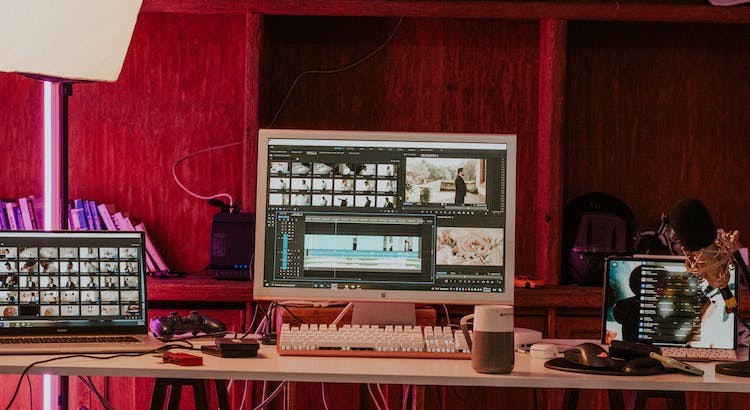What Are SDH Subtitles? A Guide to Inclusive Media
Subtitles have become a standard feature in modern media. They make it possible for people to watch movies, TV shows, and videos in a language they understand. But subtitles for the Deaf and Hard of Hearing, or SDH, offer more than just dialogue—they help everyone enjoy media, no matter their hearing ability.
Understanding SDH Subtitles
SDH stands for "Subtitles for the Deaf and Hard of Hearing." These subtitles provide a text version of all important sounds in a movie, show, or video. SDH subtitles do more than display spoken words.
- They describe background noises (such as “dog barking” or “phone ringing”).
- They identify music or lyrics.
- They note sound effects that impact the story (“door creaks”).
By including these sounds, SDH subtitles allow people with any level of hearing loss to understand a scene’s mood and action.
Why Are SDH Subtitles Important?
According to the World Health Organization, over 5% of the world's population—around 430 million people—have hearing loss (2021). SDH subtitles help everyone access audio information that might otherwise be missed. For example, a viewer who cannot hear will still know when a song plays or if thunder claps in the distance.
- SDH subtitles promote equity in media.
- They support language learners and non-native speakers.
- They help in noisy public spaces where sounds are hard to hear.
- They improve comprehension for all audiences.
For these reasons, many streaming services and media producers now require SDH subtitles.
How Do SDH Subtitles Differ from Closed Captions?
SDH subtitles and closed captions may look similar, but they are not the same thing.
Closed Captions
- Primarily used for television broadcasts.
- Display spoken dialogue word-for-word.
- Show some background sounds, but may skip important audio cues.
- Often appear as white text on a black background.
SDH Subtitles
- Designed for streaming, DVDs, and online content.
- Show both dialogue and details about important sounds.
- Use multiple colors to indicate different speakers or types of sounds.
- Placed for best viewing, so they do not block critical visuals.
Unlike closed captions, SDH subtitles offer a fuller audio description, making content more engaging and clear for viewers who need more context.
Best Practices for Creating SDH Subtitles
Producing high-quality SDH subtitles is essential for accessibility. To achieve this, creators must follow set guidelines and standards.
Key Guidelines
- Clarity: Use simple, clear language to capture all important sounds and speech.
- Legibility: Select fonts that are easy to read and use proper sizing for all devices.
- Timing: Make sure subtitles appear in sync with the sounds or speech they represent.
- Placement: Ensure text does not hide actors' faces or important visual elements.
- Conciseness: Keep subtitles brief to avoid overwhelming the viewer.
The subtitling process often uses the SDH-SRT file format, making subtitle files compatible with most media players and platforms.
Typical Steps in SDH Subtitle Creation
- Transcribe all spoken dialogue and relevant audio cues.
- Add descriptions for sound effects, music, and background noise.
- Edit for length and clarity.
- Sync subtitle timing with the video content.
- Proofread the finished subtitles for accuracy.
Professional transcription proofreading services can help ensure subtitles meet accessibility standards.
The Impact of SDH Subtitles on Inclusive Media
SDH subtitles are crucial for creating an inclusive media experience. They break down barriers for people with hearing loss and those in noisy environments.
- Enable comprehension of mood, context, and emotions.
- Facilitate enjoyment of media for everyone, regardless of hearing ability.
- Support the global reach of content by making it accessible and understandable.
Entertainment companies, educators, and businesses benefit from using SDH subtitles, ensuring no one misses out on important information or entertainment value.
Supporting Accessibility with GoTranscript
If you need SDH subtitles or want to make your media more accessible, GoTranscript offers a variety of transcription services tailored to these needs. Their closed caption services and subtitling services deliver accurate, high-quality text for all types of content.
- Automated transcription for faster turnaround: Learn more.
- Flexible AI transcription subscriptions for ongoing projects.
- Affordable transcription pricing and straightforward captioning rates.
- Easy online ordering for transcriptions or captions.
- Comprehensive text translation and audio translation services for global audiences.
SDH subtitles are vital for media accessibility and inclusion. GoTranscript makes it easy for creators to reach a broader, more diverse audience through expert subtitle and captioning solutions.



















 Verified Order
Verified Order